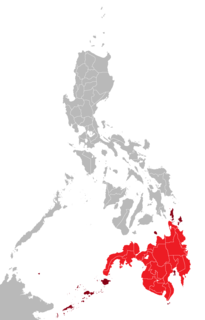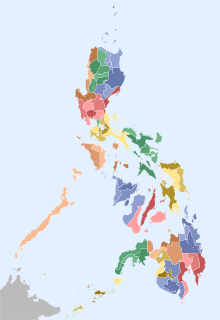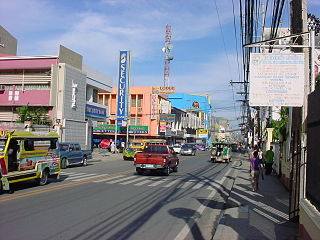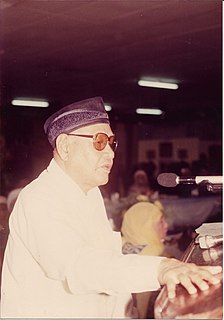History
The term "Lanao" is derived from a Maranao word "Ranao" meaning a body of water. "Meranau" means lake dweller. They are the natives of the place occupying the land around Lake Lanao, which is situated at the central part of Lanao del Sur. Lanao, applies to the entire area before its division. When it was divided into two provinces, the southern portion became Lanao del Sur and the northern part became Lanao del Norte.
Dansalan, Marawi City's old name, was explored by the Spaniards as early as 1639. It is said that at that time, Marawi was already the citadel of Malayan-Arabic culture in Mindanao. Feeling the pulse of strong refusal among its inhabitants to adopt Christianity, the Spaniards abandoned the project of colonizing the area. Dansalan, physically speaking, would have satisfactorily qualified to become a town or municipality during the time of said exploration based on the Spanish Policy of "Ecclesiastical Administration" except for fanatical resistance of the natives who were mostly under Muslim rule.
A strong Spanish expedition to conquer the Maranaos was fielded in 1891 during the time of Governor General Valeriano Weyler, but this force was driven back to Iligan after failing to capture Dansalan. In 1895, Governor General Blanco sent a stronger force to take Marawi that thanks to superior firepower finally overrun the last defenses. The Spanish forces won a decisive victory and were able to erect a garrison in Dansalan and they already took with them Chabacanos and Chabacano-speaking Muslims from Zamboanga and Basilan and Cebuanos. However, they had to abandon it just four years later after the outbreak of the Spanish–American War in 1898, leaving it on the hands of the new American colonizers, who imposed their own rule on the population.
American occupation
On May 24, 1904, the American Colonial Government proclaimed Dansalan a regular Municipality. The Philippines was still under the Commonwealth regime of the Americans when Dansalan was chartered into a city in 1904. In 1914, the Department of Mindanao and Sulu was created and Lanao was converted as a province.

Mindanao is the second-largest island in the Philippines, after Luzon and seventh-most populous island in the world. Located in the southern region of the archipelago, the island is part of an island group of the same name that also includes its adjacent islands, notably the Sulu Archipelago. According to the 2020 census, Mindanao has a population of 26,252,442 people, while the entire island group has an estimated population of 27,021,036 according to the 2021 census.

In the Philippines, provinces are one of its primary political and administrative divisions. There are 81 provinces at present, which are further subdivided into component cities and municipalities. The local government units in the National Capital Region, as well as independent cities, are independent of any provincial government. Each province is governed by an elected legislature called the Sangguniang Panlalawigan and an elected governor.

Zamboanga Peninsula is an administrative region in the Philippines, designated as Region IX. It consists of three provinces including four cities and the highly urbanized Zamboanga City. The region was previously known as Western Mindanao before the signing of Executive Order No. 36 of 2001. The city of Zamboanga was designated as the regional center until Pagadian was designated as its new regional center, although Zamboanga City remains the region's cultural, economic, and educational center.

Lanao del Norte officially the Province of Lanao del Norte, is a province in the Philippines located in the Northern Mindanao region. Its capital is Tubod.

Lanao del Sur, officially the Province of Lanao del Sur, is a province in the Philippines located in the Bangsamoro Autonomous Region in Muslim Mindanao (BARMM). The capital is the city of Marawi, and it borders Lanao del Norte to the north, Bukidnon to the east, and Maguindanao and Cotabato to the south. To the southwest lies Illana Bay, an arm of the Moro Gulf.

The Autonomous Region in Muslim Mindanao was an autonomous region of the Philippines, located in the Mindanao island group of the Philippines, that consisted of five predominantly Muslim provinces: Basilan, Lanao del Sur, Maguindanao, Sulu, and Tawi-Tawi. It was the only region that had its own government. The region's de facto seat of government was Cotabato City, although this self-governing city was outside its jurisdiction.

Iligan, officially known as the City of Iligan, is a 1st class highly urbanized city in the region of Northern Mindanao, Philippines. According to the 2020 census, it has a population of 363,115 people.

Marawi, officially known as the Islamic City of Marawi, is a 4th class component city and capital of the province of Lanao del Sur, Philippines. According to the 2020 census, it has a population of 207,010 people.

Mindanao State University, commonly referred to as MSU Main, is a regional state, coeducational, research higher education institution in the city of Marawi, Philippines. Founded in 1961, it is the flagship and the largest campus of the Mindanao State University System.

Butig, officially the Municipality of Butig, is a 6th class municipality in the province of Lanao del Sur, Philippines. According to the 2020 census, it has a population of 22,768 people.

The Moro people or Bangsamoro people are the 13 Muslim-majority ethnolinguistic Austronesian groups of Mindanao, Sulu, and Palawan, native to the region known as the Bangsamoro. As Muslim-majority ethnic groups, they form the largest non-Christian population in the Philippines, and comprise about 5% of the country's total population, or 5 million people.
The legislative districts of Lanao del Norte are the representations of the province of Lanao del Norte in the various national legislatures of the Philippines. The province is currently represented in the lower house of the Congress of the Philippines through its first and second congressional districts.
The legislative district of Lanao was the representation of the historical province of Lanao in the various national legislatures of the Philippines until 1969. Marawi and Iligan also remained part of the province's representation even after becoming chartered cities in 1940 and 1950, respectively.
The legislative districts of Lanao del Sur are the representations of the province of Lanao del Sur in the various national legislatures of the Philippines. The province is currently represented in the lower house of the Congress of the Philippines through its first and second congressional districts.
General elections are held for the first time in the newly created Autonomous Region in Muslim Mindanao for the Regional Governor and Vice-Governor were held on February 12, 1990. The Autonomous Region in Muslim Mindanao region was first created on August 1, 1989, through Republic Act No. 6734 otherwise known as the Organic Act in pursuance with a constitutional mandate to provide for an autonomous area in Muslim Mindanao. A plebiscite was held in the provinces of Basilan, Cotabato, Davao del Sur, Lanao del Norte, Lanao del Sur, Maguindanao, Palawan, South Cotabato, Sultan Kudarat, Sulu, Tawi-Tawi, Zamboanga del Norte and Zamboanga del Sur; and in the cities of Cotabato, Dapitan, Dipolog, General Santos, Iligan, Marawi, Pagadian, Puerto Princesa and Zamboanga to determine if the residents would want to be part of the ARMM. Of the areas where the plebiscites were held only Lanao del Sur, Maguindanao, Sulu and Tawi-Tawi voted favorably for inclusion in the new autonomous region.

The Roman Catholic Archdiocese of Ozamis is a metropolitan archdiocese of the Roman Catholic Church in the province of Misamis Occidental, southern Philippines. The archdiocese cathedral is the Metropolitan Cathedral of the Immaculate Conception in Ozamiz City, and its present archbishop is Martin Jumoad. The official spelling of the church is Ozamis, while the city it is located is Ozamiz.

The southern island group of Mindanao in the Philippines is divided into six administrative regions. Each region is subdivided into provinces.

Bangsamoro, officially the Bangsamoro Autonomous Region in Muslim Mindanao, is an autonomous region located in the southern Philippines.

An autonomous region of the Philippines is a first-level administrative division that has the authority to control a region's culture and economy. The Constitution of the Philippines allows for two autonomous regions: in the Cordilleras and in Muslim Mindanao. Currently, Bangsamoro, which largely consists of the Muslim-majority areas of Mindanao, is the only autonomous region in the country.

Ahmad Domocao "Domie" Alangadi Alonto was a Muslim-Filipino lawyer, educator, author, traditional leader, and Islamic figure from Lanao del Sur.
















